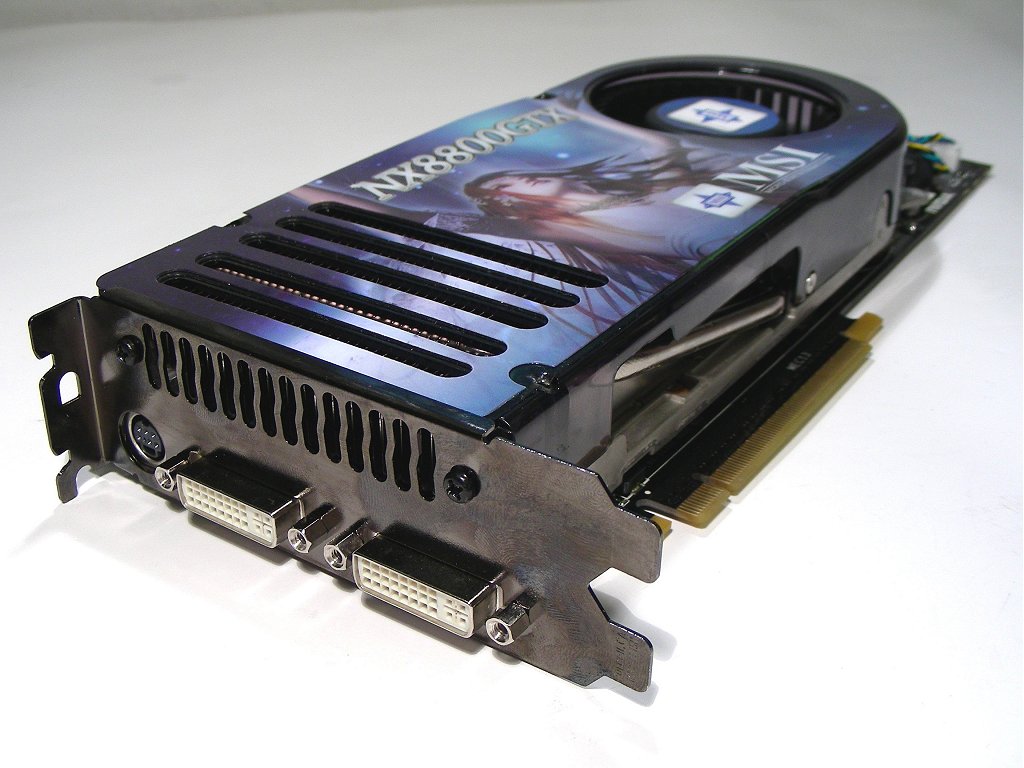The Card
There are already a number of GeForce 8800 GTX graphics cards on the market, with the majority of them following the Nvidia reference design very closely. The MSI GeForce 8800 GTX is no exception, following all the way from the PCB to the cooling setup. The package is also quite bland, featuring a copy of Serious Sam 2, Heroes of Might & Magic V, and some MSI software.
 |
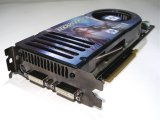 |
 |
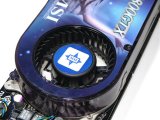 |
The card features 768MB of onboard GDDR3 memory clocked at 900MHz (1800MHz DDR). These cards utilized Samsung ICs (K4J52324QE-BJ1A) and it would appear that the majority of GeForce 8800 GTX based cards will use similar Samsung memory. After some quick research, I have found that these modules are rated at 1800MHz DDR. These memory chips are all located on the front side of the graphics card, same side as the GPU.
 |
 |
In action the GeForce 8800 GTX operating volume level is quite pleasant for the most part, it does increase the throttle when under load. However unlike previous GeForce products this one does not appear to generate all that much noise when gaming. Although the operating volume is not something I would concern myself with, the power requirement for this graphics card is somewhat of a concern, particularly when in SLI mode. Those that plan to utilize the power of SLI with the 8800 GTX will need a 600 watt power supply or higher, depending on the rest of the system specs you may need more.
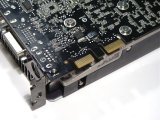 |
 |
The 8800 GTX requires two additional 6-pin power connectors to function (which deliver ~75 watts of power each), while the PCI Express 16x slot offers another 75 watts, we can therefore assume the 8800 GTX is capable of sucking up to 225 watts of power when under load.
 |
 |
Cooling the GeForce 8800 GTX core and the 12 memory chips is a rather large heatsink and fan combo. The setup is huge, though given that it is primarily constructed from aluminum, there is a lot less weight in this heatsink when compared to those featured on the Radeon X1950XTX.
 |
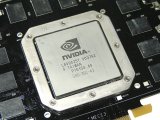 |
The new GeForce 8 series will feature two SLI bridge connectors rather than just one. ATI has just recently promoted their products to a dual bridge configuration, and Nvidia is doing much the same. The SLI dual connectors are for future applications and will also allow three way SLI modes. Currently, there is little to no need for dual 8800 GTX graphics cards given how powerful just one of these cards is. However there are those who will pick up two 8800 GTX graphics cards and unless you have a monitor that supports a resolution of 2048x1536 and beyond, the second card will be a complete waste.
 |
 |
The MSI GeForce 8800 GTX also offers two dual-link DVI ports which are driven by the new Nvidia NVIO controller. This controller handles TMDS (Transition Minimized Differential Signaling) which is a feature that is very difficult to include in the core itself, particularly given how complex the G80 core already is. The NVIO controller also offers HDCP support which provides a robust, cost-effective and transparent method for transmitting and receiving digital entertainment, similar to DVI/HDMI-compliant digital displays. HDCP encrypts the data transmitted between the DVI/HDMI connector on the graphics adapter and the display. To provide this support, both the graphics adapter and the display need to have an HDCP transmitter and receiver respectively.
There are two versions of the MSI GeForce 8800 GTX, one which features the Nvidia NVIO controller, known as the NX8800 GTX-T2D768E-HD, and one that doesn't; the latter drops the -HD from the naming. MSI is not doing anything unethical here, as it is perfectly fine to exclude the NVIO controller and by doing so, they can offer a cheaper version of the 8800 GTX to those that do not care for the HDCP support. The price difference is not clear yet, as I cannot find a single retailer that is selling both versions.
